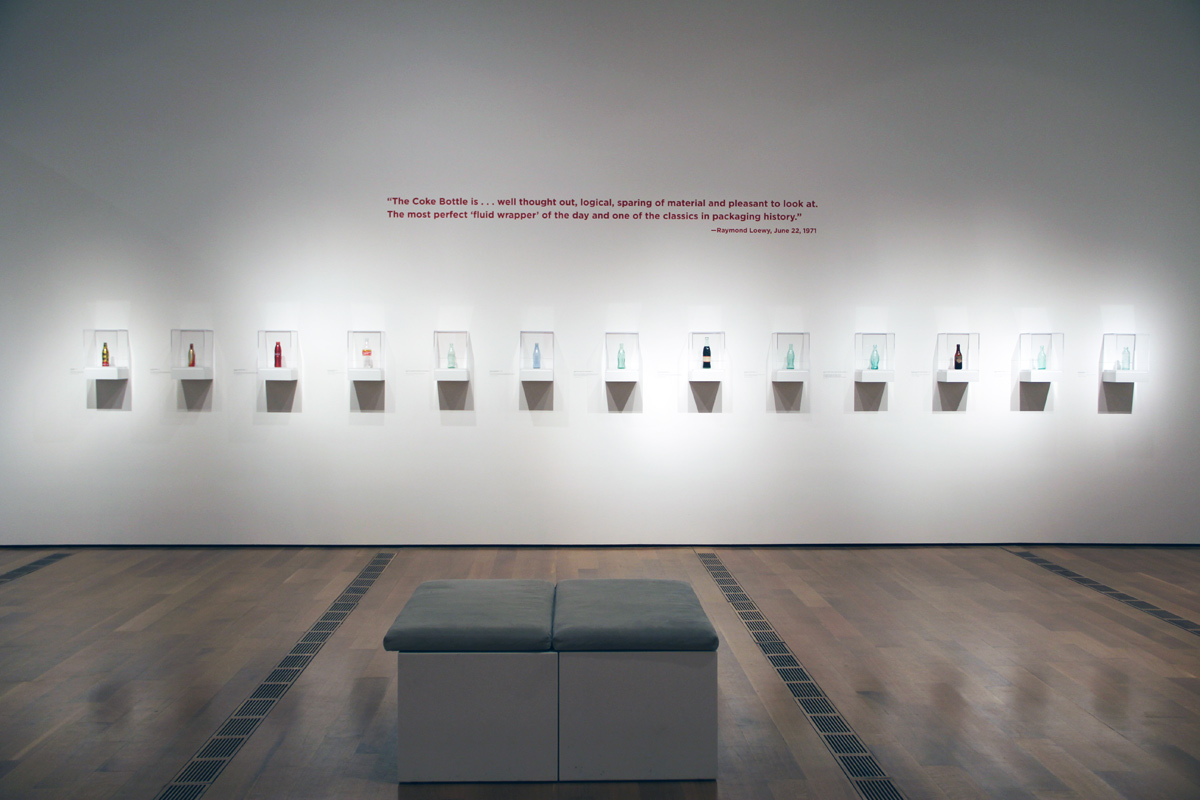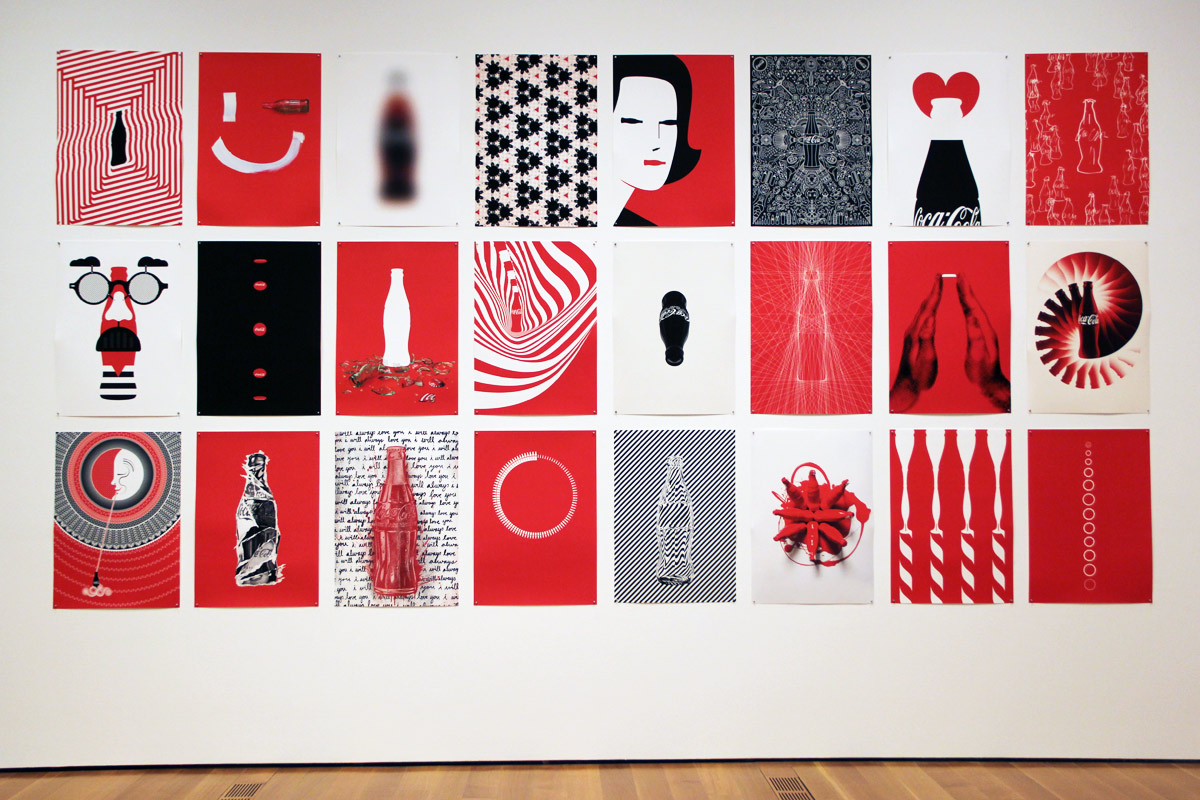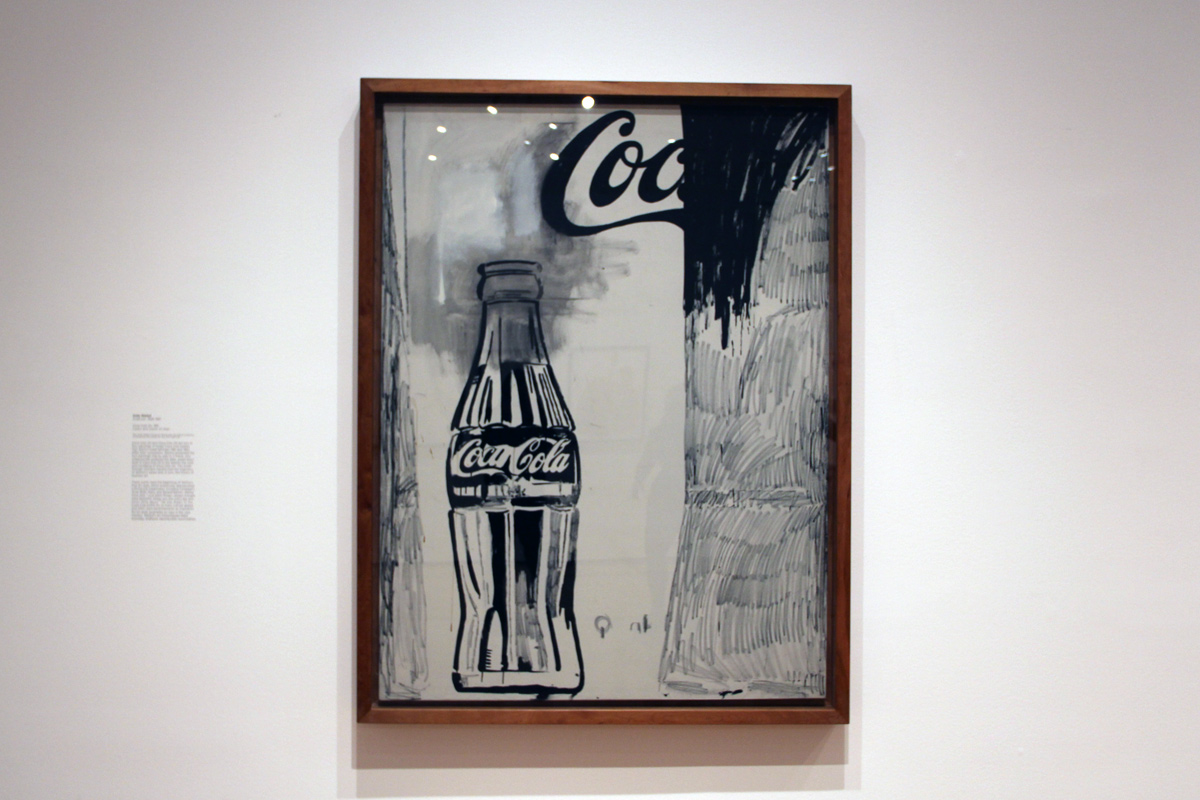The Coca-Cola Bottle: An American Icon at 100
Atlanta’s High Museum of Art pays homage to the iconography at an exciting exhibition
In 1915, the Coca-Cola Company distributed a brief to bottle makers across the US. The request was to craft a bottle so distinct that it could be recognized by hand in the dark—that its essence would remain visible even when shattered. Root Glass Company in Terre Haute, Indiana responded to the call and the first iteration of what we know today as the Coca-Cola glass contour bottle was born. Since then, hundreds of billions of bottles have been sold and along the way it would become one of the most recognizable design items around the world. And with that, a century of art was inspired.

“The Coca-Cola Bottle: An American Icon at 100,” an exhibition celebrating the bottle and the art it inspired, opens Saturday 28 February 2015 at Atlanta’s High Museum of Art. The two-floor exploration incorporates five impressive sections. A newly commissioned work by Coca-Cola from Conran and Partners sees over 500 ribbon-like, 3D-printed deconstructions of the contour bottle, strung from the ceiling of the entryway. It’s a fitting introduction to what comes next.

The exhibition features more than 100 objects—a blend of old and new, equal parts nostalgic and future-forward. An entire section is dedicated to the genesis of Coca-Cola bottle design, featuring one of only two bottles in existence dating back to 1902. Design history accompanies each piece, offering insight and deepening the value of the experience. In one room, over 15 works of art by Andy Warhol reflect Coke’s impact on the Pop Art movement. And a final room showcases 40 photographs inspired by or featuring the Coca-Cola bottle, with both Walker Evans and William Christenberry featured. The impact of the overall experience leaves viewers awestruck at the depth of inspiration a glass bottle can ignite.

The final section, dubbed the “Mash Up,” features an array of brand new graphic design work presented in large scale. All of the pieces, which were either crowdsourced or developed my Coca-Cola’s internal teams, are riffs on classic iconography. The design team went through the brand’s extensive archives, selected moving historic works and encouraged the world to participate. From mesmerizing textures to emphasized attributes of the already known, these “mash ups” deliver upon Coca-Cola’s promise to keep developing and inspiring artistry.

James Sommerville, Coca-Cola’s Vice President of Global Design, explains that there were two through-lines to the exhibition, the first being transitioning from mass communication to mass intimacy. “Mass communication, you can see, is that we are a global brand who regularly and consistently communicates to everybody, everywhere. I think what Coca-Cola has always been successful at. And what we are driving toward now is making every beverage and every transaction and every pour very intimate. Drinking from a Coke bottle is very intimate. Let’s face it, you put the glass to your mouth. While we have scale and a business that needs to deliver, we also want to make every experience intimate for an individual,” he shares with CH.

The second notion at play is “kissing the past hello.” Sommerville continues, “we’ve got this very rich and deep heritage. It’s almost a playground of things that have gone on for the last 100 or more years. It’s about embracing our past and being proud of it. But how do we refresh that and make it relevant to tomorrow and the day after? In a way, it’s saying ‘back to the future,’ but with a more emotional connection.” This factors heavily into the exhibition and originally motivated the desire for the “mash up” section.
The bottle is inspirational. Witnessing it in the context of design briefs and the nuanced developments of the ages, all surrounded by the art it inspired, carries weight. “I think in the beginning, the design of the bottle itself was an inspired solution to an inspiring brief. Since then, many artists and designers see it almost as a canvas,” Sommerville concludes. But it isn’t just artists that have been inspired, much of the world has experienced the nostalgia and the want to strive forward that this exhibition offers.
Images by David Graver

















